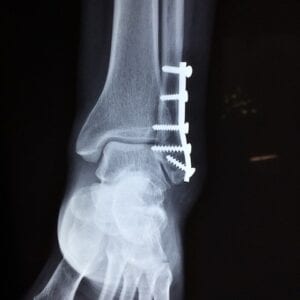According to a recent article, a study has found that denosumab therapy leads to patients with osteoporosis having a higher risk of getting osteonecrosis of the jaw in comparison to those treated with bisphosphonates.
Osteonecrosis (Avascular Necrosis)
Avascular necrosis, which is also known as osteonecrosis, is a rare disease characterized by reduced blood flow to bones in the joints, leading to bone tissue death. Avascular necrosis is associated with long-term use of high-dose steroid medications and excessive alcohol intake.
Cause:
Avascular necrosis occurs when blood flow to a bone is interrupted or reduced. Reduced blood supply can be caused by any of the following factors:
- Joint or bone trauma
- Fatty deposits in blood vessels
- Certain diseases, such as:
- Sickle cell anemia
- Gaucher disease
- Pancreatitis
- Diabetes
- HIV/Aids
- Systemic lupus erythematosus
For about 25 percent of people with avascular necrosis, the cause of interrupted blood flow is unknown. Long-term steroid treatment and alcohol abuse may also be factors.
The Study
The study looked at 9,956 adult patients’ data who were thought to have osteoporosis (a disease that thins and weakens the bones), had a DXA scan (a minimum of one), and were a part the national register from the Swiss Society of Rheumatology. The patients in the study were looked at between January 2015 and September 2019, with their data about demographics, risk factors for osteoporotic fractures, T-scores (a bone density evaluation), trabecular bone scores, clinical and morphometric fracture data, and anti-osteoporotic therapies being collected.
Results
3,068 patients were given bisphosphonates, denosumab, or both in sequences. Out of all of the patients, 12 of those who received denosumab were diagnosed with osteonecrosis of the jaw, and 5 of the patients who received bisphosphonate therapy were diagnosed with the disease. Furthermore, the incidence rate for those who were treated with bisphosphonate therapy was 4.5 per every 10,000 patient-years compared to those who received denosumab therapy having an incidence rate of 28.3 per every 10,000 patient-years.
It is important to note that over half of those involved in the study already had risk factors pertaining to osteonecrosis of the jaw. These factors included smoking, glucocorticoid therapy and type 2 diabetes, rheumatoid arthritis, and aromatase inhibitors.
Researchers concluded that adults who were treated with denosumab therapy had an increased risk of being diagnosed with osteonecrosis of the jaw in comparison to patients who received bisphosphonate therapy. They warn that patients should be cognizant of this potential side effect of their therapy and should sustain good oral hygiene and health in an effort to minimize the possibility of it occurring.








